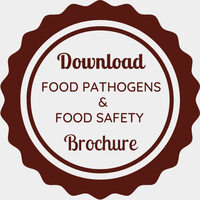Day 2 :
Keynote Forum
Maciej Combrzyński
University of Life Sciences in Lublin, Poland, Faculty of Production Engineering, Department of Thermal Technology and Food Process Engineering
Keynote: A new generation of extruded snacks with the addition of cricket flour
Time : 1:00 pm

Biography:
Maciej CombrzyÅ„ski has completed his PhD at the age of 28 years from University of Life Sciences in Lublin. He is an assistant professor. He is a Head of the research project LIDER X LIDER/29/0158/L-10/18/NCBR/2019 entitled “Development of a Comprehensive Technology of Obtaining High-Quality Extruded Snacks Based on Minimally Processed Vegetable and Animal Raw Materials”. He is an author and co-author of over 50 scientific papers and over 40 conference proceedings. His scientific activity is focused on funtional food and ecological biopolymers.
Abstract:
Nowadays more and more consumers are looking for new innovative products that play an important role in nutrition and allow to obtain a proper nutritional balance. The fundamental function of food is to provide the body with energy, nutrients and satisfaction that comes directly from eating it. The changing needs of customers are results of the fast pace of life and the lack of time to prepare meals. Another trend that will also develop at such a dynamic pace is the consumption of healthy snacks. The extrusion-cooking process makes it possible to obtain innovative and healthy products. Already, there are many voices that using insects into the daily diet can largely solve the global problems related to access to food in the poorest parts of the world. This raw materials can be ensure a higher coverage of the daily requirement for valuable nutrients like protein, fats and other nutrients.
Potato and cereal compositions were used for control mixtures and cricket flour was used as nutritionally valuable additive in various amount. The Polish prototype of single screw extruder-cooker Zamak Mercator type EXP-45-32 was used during extrusion-cooking process. Selected chemical analyses were completed as well as protein, fat and fibers content. Additionally, the antioxidant activity was compared. Expanded in hot oil snacks with cricket flour addition showed increased nutritional value and antioxidant activity.
These results are part of the research project LIDER/29/0158/L-10/18/NCBR/2019 entitled “Development of a Comprehensive Technology of Obtaining High-Quality Extruded Snacks Based on Minimally Processed Vegetable and Animal Raw Materials”.
Keynote Forum
Marcin Mitrus
University of Life Sciences in Lublin, Poland
Keynote: The influence of fresh highbush blueberry addition on the extrusion process of snack pellets
Time : 03:00 PM

Biography:
Marcin Mitrus is an Assistant Professor of technical sciences at the University of Life Sciences in Lublin. His scientific activity last years is focused on technological and nutritional aspects of functional foods, especially starch and starchy products. He is an author and co-author of 110 scientific papers and 60 conference proceedings.
Abstract:
In many countries, mainly Europe and the United States, a limited consumption of fresh fruit and vegetables has been observed. The lack of a balanced diet can lead to many civilization diseases such as cardiovascular disease, diabetes, obesity, or colon cancer. In order to minimize this undesirable trend, fresh fruit and vegetables can be added to a variety of meals, including snacks.
The aim of this work was to investigate the influence of fresh highbush blueberry addition on the extrusion-cooking process of snack pellets. Extrusion-cooking process was performed using the Polish prototype single screw extruder-cooker Zamak Mercator type EXP-45-32. Determination of relevant recipe mixtures based on potato or cereal raw materials and the use of fresh highbush blueberry addition in various amount allowed to obtain high-quality snack pellets. A low level of moisture content of blends and high screw rotational speed allowed to increase the efficiency of the extrusion-cooking process at a relatively high energy consumption during processing. The increased initial moisture content of processed blends and higher percentage of highbush blueberry content in recipies affected the lower consumption of specific mechanical energy during the extrusion-cooking process. These results are part of the research project LIDER/29/0158/L-10/18/NCBR/2019 entitled “Development of a Comprehensive Technology of Obtaining High-Quality Extruded Snacks Based on Minimally Processed Vegetable and Animal Raw Materials”.
Keynote Forum
Tomasz Oniszczuk
University of Life Sciences in Lublin, Poland
Keynote: A new generation of extruded snacks with the addition of broccoli
Time : 11:00 AM

Biography:
Tomasz Oniszczuk is an associate professor at the University of Life Sciences in Lublin. His scientific activity is focused on processing aspects of new extruded products, both food and feed as well as biopolymers. He is an author and co-author of 119 scientific papers, 74 conference proceedings and 4 patents.
Abstract:
There is a growing market for extruded sweet or savory snacks. At the same time, there is a strong focus on the possibility to save water and energy in the food production sector The addition of pulp from fresh vegetables is not only for the development of new types of products, but also allows significantly to reduce the consumption of water and energy during processing what is the result of omitting the drying step. The aim of this work was to investigate the influence of fresh broccoli addition on the extrusion-cooking process of snack pellets. Extrusion-cooking process was performed using the Polish prototype singlescrew extruder-cooker Zamak Mercator type EXP-45-32. Determination of relevant recipe mixtures based on potato or cereal raw materials and the use of fresh broccoli addition in various amount allowed to obtain high-quality snack pellets. The processing efficiency, specific mechanical energy, expansion ratio, bulk density, colour and texture profile were determined. The screw rotation speed had significant effect on processing efficiency, and the interactions between content of broccoli additives and screw speed had significant effect on processing efficiency, physical properties and texture of snack products.
These results are part of the research project LIDER/29/0158/L-10/18/NCBR/2019 entitled “Development of a Comprehensive Technology of Obtaining High-Quality Extruded Snacks Based on Minimally Processed Vegetable and Animal Raw Materials”.
Keynote Forum
Nahla Mohamed Hassan Mohamed
Nutritional sciences, University of Khartoum
Keynote: Effect of Vitamin E (alfa-tocopherol) Supplementation on Hemato-biochemical Profile of Race Stallions Horses
Time : 10:30 AM

Biography:
Abstract:
This study was conducted with the objective of determining the effect of vitamin E (α-tocopherol) supplementation on hemato-biochemical Parameters of stallion race horses in Khartoum State. The field study was carried out using 21 animals of gelding stallions race horses, thoroughbred, with average body weight 300 ± 60 kg and average age was 7 years. The horses were housed in three stables and all animals were fed green alfalfa and concentrates twice a day. The concentrate was supplemented with three levels of Vitamin E (0, 2000 IU, 3000 IU kg /feed) and 7animals were a assigned for each treatment. The experiment was carried out in two periods, the first during the period from November to December 2016 and the second from March to April 2017. Blood samples were collected from the jugular vein at the end experiments in both winter and summer season. Blood samples and serum were used to determine hemato-biochemical parameters. Statistical Analysis of data used SPSS for Windows version 20.0. Factorial Randomized Design with 2×3 (2 seasons and 3 levels of vitamin E) was used to conduct the experiments. The results indicated that with respect to the hematology parameters: HB, MCH, MCHC MCV, PCV, and TRBC increased significantly (P≤ 0.01) with increasing the level of vit. E in both winter and summer seasons. Increasing the level of vit. E resulted in positive decreased and significant differences (P≤ 0.01) in TWBC in summer season, and neutrophil and Basophil in winter season. The results of biochemical parameters: triglyceride, cholesterol (LDL, VLDL), albumin, globulin and uric acid decreased significantly (P≤ 0.01), while glucose and HDL increased in both seasons. Moreover, a significant (P≤ 0.01) decreased were detected in the liver enzymes AST, ALT, ALP and kidney function test 3 (creatinine and urea) in both winter and summer season. Furthermore, clotting time and serum vitamin E level increased significantly (P≤ 0.01) in both seasons. During the interaction between treatments and seasons, there were no significant between seasons and treatments in HB, MCV, PCV, Basophile, Triglyceride, Cholesterol, HDL, AST, Urea, Body Weight and Vitamin E Serum. And there were significant between seasons and treatments in MCHC, TRBC, TWBC, Neutrophil, Lymphocytes, Monocyte, Esinophil, Glucose, LDL, VLDL, Albumin, Uric acid, ALT, ALP, Creatinine and Clotting Time. Vitamin E supplementation had positively influenced in some hematology and biochemical parameters in stallions race horses. It is recommended to use a scientific approach for feeding horses to avoid malnutrition and diseases.
Keynote Forum
Dr. Janyce Franc
General manager & co-founder, Sterixene
Keynote: Pulsed UV light for bacterial reduction: Impact of physical parameters on Aspergillus brasiliensis
Time : 02:30 PM

Biography:
Abstract:
Keynote Forum
Marcela A C de Albuquerque
PhD in Sciences, NEPP – Center for Studies in Probiotics and Prebiotics, Rio de Janeiro, Brazil
Keynote: Lactic acid bacteria in preservation and improvement of nutrients In fermented foods
Time : 02:30 PM

Biography:
Marcela Albuquerque is food microbiologist, PhD in Sciences, and she has been studying the technological and functional aspects of lactic acid bacteria (LAB) during the last 13 years aiming the development of foods with high nutritional and health-added values. She founded the company NEPP – Center for Studies in Probiotics and Prebiotics (RJ, Brazil) where she coordinates scientific consulting projects with private and academic institutions. Her research topics are mainly about the production of B group vitamins and proteolytic activity of LAB to improve nutritional properties of fermented foods as well as the safety aspects of foods exploring natural preservation strategies by using LAB-fermentation. Aiming to summarize her academic and professional career and background contributing to prospect the related LAB topics to the industry and scientific communities, she published the book “Lactic Acid Bacteria: a functional approach” (CRC PRESS, FL, USA) in 2020.
Abstract:
Fermented foods have been consumed over the years by humans and their nutritional and functional aspects are of interest for the development of innovative foods with different added-values (Marco et al., 2021). The biochemistry defines fermentation as “an ATP-generating process in which organic compounds act as both donors and acceptors of electrons” (Kim and Gadd, 2019) however, considering the food producing process, fermentation is characterized by the activity of intentional microorganisms that produce desirable characteristics. Thus, fermented foods are “foods made through desired microbial growth and enzymatic conversions of food components” (Marco et al., 2021) that present an intrinsic and complex microbiota, usually mainly composed by lactic acid bacteria (LAB) and yeasts. In addition, other microorganisms, such as acetic acid bacteria and filamentous fungi, may be also found.
The microbiota of fermented foods may be modulated from one sample to another depending on several factors which includes, but it is not limited to, the raw materials, pH, water activity (Aw), temperature of fermentation and by the initial microbial community itself. In this way, fermenting food using wild starter cultures such as those ones found, for example, in kefir grains or sourdough will hardly address the same microbial and biochemical compositions.
Many studies have been evolved regarding the technological and functional aspects of these microorganisms aiming to develop fermented foods with sensorial, nutritional, and healthy attributes able to meet the expectation of consumers (Albuquerque et al., 2020). In addition, considering that the point of view of the consumers about eating more natural foods has increased, studying the safety aspects of fermented foods is also another role played by some microorganisms that can be explored to avoid using chemical food preservatives.

